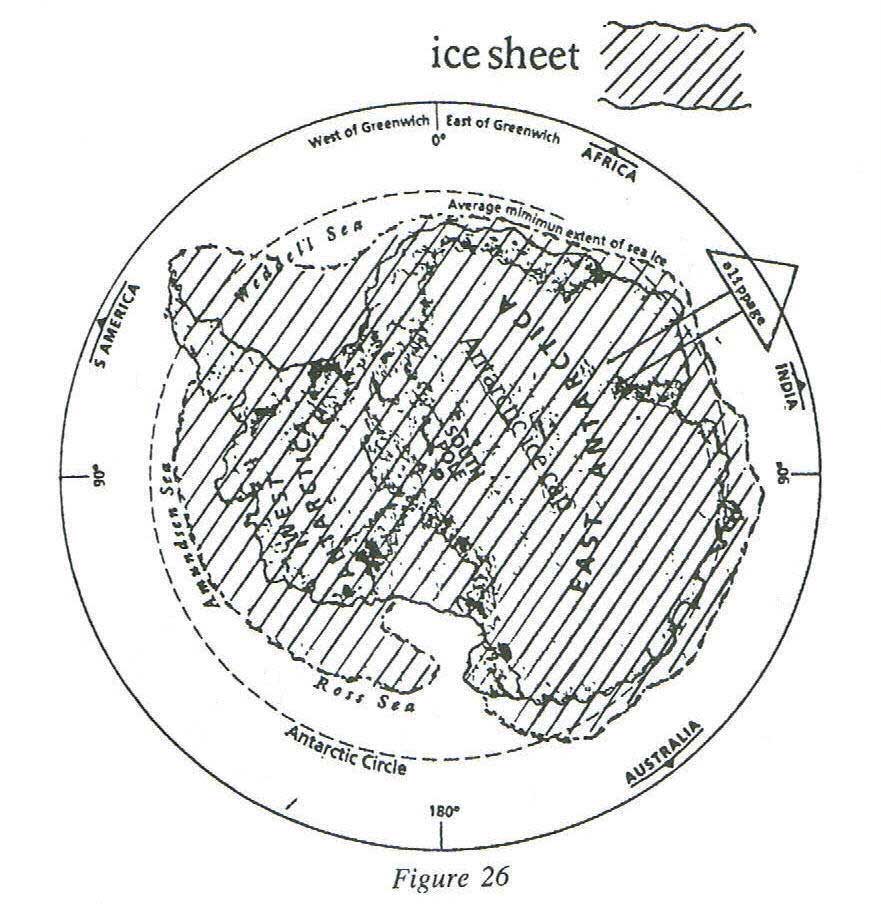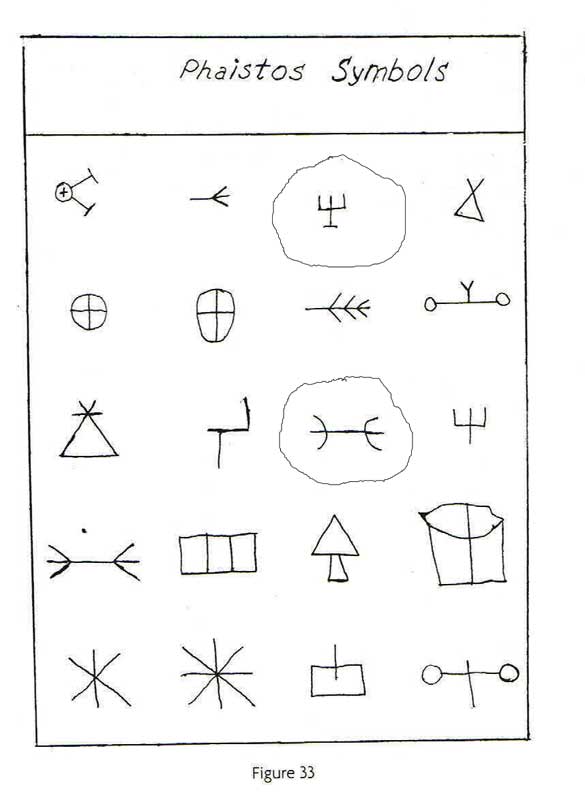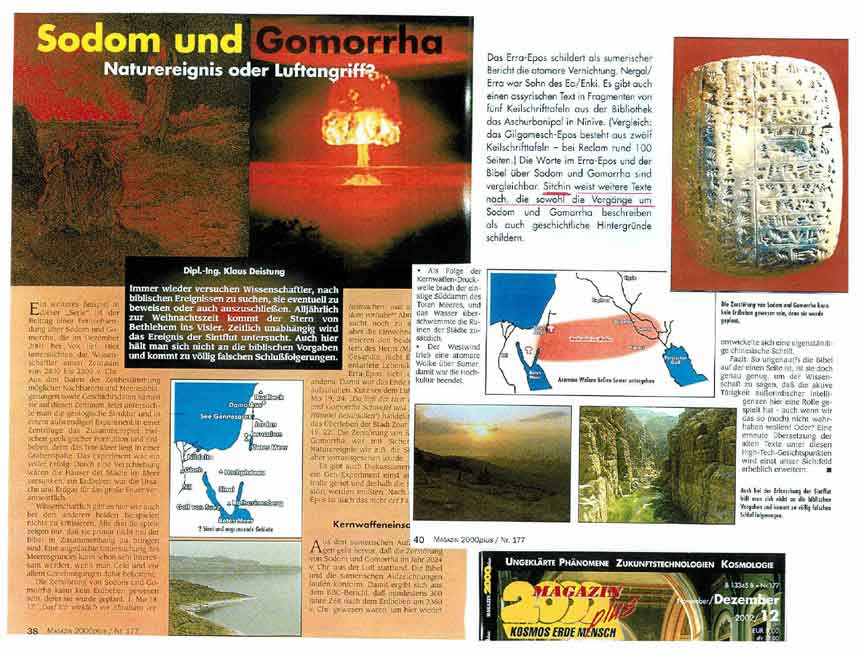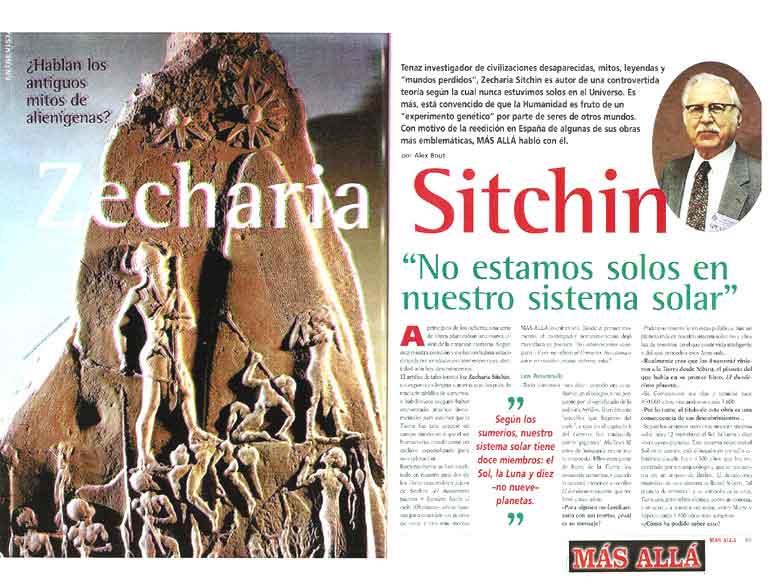|
In The Media: The Italian mass circulation magazine UFO Notiziario, in its August/September 2006 issue, is featuring an eight page interview with Zecharia Sitchin, accompanied by an overview of his writings. All of Zecharia's books have been published in Italy by Edizioni Piemme |
|
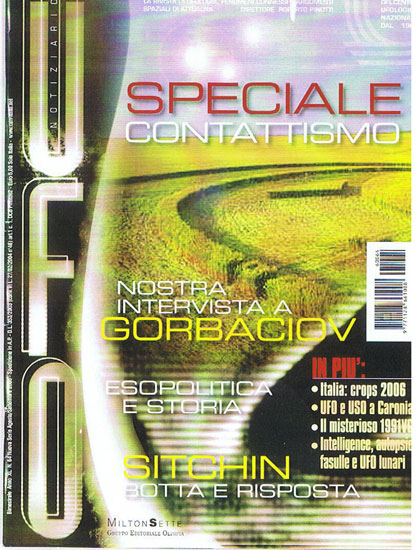 |
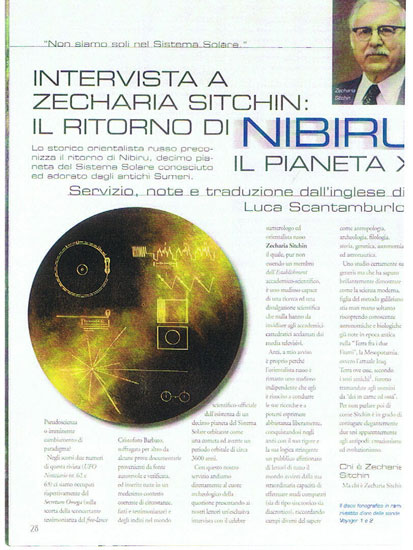 |
| In The Media: FATE Magazine, May 2006 | ||
|
Phyllis Galde’s column, "I See By The Papers,” provides some of the most thought provoking reading in every issue of FATE magazine, and as often as not includes a news item that links the Present to the Future through the Past. One such recent item, titled The Doomsday Vault (FATE, March 2006), reports plans to carve out on the Norwegian Island of Spitzbergen an artificial mountain cave in which about “two million seeds, representing all known varieties of the world’s food crops,” would be safely kept from destruction by natural or manmade disasters. I found intriguing the added comment by the project’s initiators that this will safeguard for mankind “the products of some 10,000 years of plant breeding by the world’s farmers;” intriguing because it was indeed some ten thousand years ago, following an overwhelming catastrophe known as the Great Flood -- that not only crops but also animal life were restored thanks to a seed preservation project. |
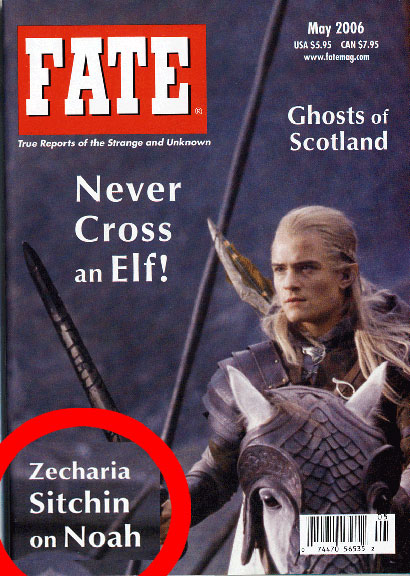 |
|
|
What Was Aboard Noah’s Ark? The biblical tale of the Great Flood is told as a bad cop/good cop story. In the first part, God was angry with Mankind and decided it should perish in the watery avalanche. Then God decided to save the human race and other life forms by telling Noah to build an ark that will survive the catastrophe, and take on board his family (for Mankind’s survival) and all manner of animals, in male & female pairs. Critics Of the Bible have pointed out that the ark, whose dimensions are given, could not have possibly hold all the purported animal species. The valid comment has, however, a simple yet an amazing explanation. We now know that the biblical deluge tale came from earlier sources - the writings of the Sumerian civilization that blossomed out in Mesopotamia (mostly today’s Iraq) some 6,000 years ago. In that tale it is one god, Enlil, who seeks Mankind’s demise, and another (Enki) who devises the rescue plan. The latter was the Mesopotamian god of science, a great biologist who was involved in genetically upgrading Homo erectus to Homo sapiens. And what did he provide to Noah to take aboard to save animal and crop life? The Sumerian text clearly answers: the “Seed of Life,” the DNA of animals and crops not the animals as such! A Mountaintop Laboratory Modern science attributes the appearance - some 10,000 years ago -- of certain animals (such as sheep) and plants (cereal crops) to Man’s gradual “domestication” efforts. The Sumerians credit that to the gods: After the Deluge, a relenting Enlil joined Enki at a mountaintop laboratory to reconstitute there the animals (starting with sheep) and crops (starting with wheat and barley) from the saved DNA. Several Sumerian texts, cited in my books The Twelfth Planet and Genesis Revisited describe the process in great detail. The seed preservation plan in Spitzbergen is thus not the first effort to biologically preserve earth’s life from a catastrophic occurrence... The “Frozen Ark” Project: Several years ago British scientists announced the “Frozen Ark Project” to preserve, as a start, the DNA of endangered species, and then of another ten thousand living creatures -- a kind of "Jurassic Park” in laboratory flasks A similar project called the Frozen Zoo was undertaken by the San Diego Zoo. Other zoos and biological centers, in Australia, China and India have also announced similar plans. Some of them recognize the similarity of their efforts to the Bible’s tale of Noah’s Ark. Few, if any, realize that the similarity is much more profound - that modem science is just catching up with ancient knowledge. © Z. Sltchin 2006
|
||
|
When Calamity Strikes Mankind THE "TSUNAMI" OF10,900 B.C. Major catastrophes that befall Mankind are sometimes spoken of as being of "biblical proportions" to describe their immensity. The words have been used these days to convey the immensity of the calamity that befell the peoples and lands of the coastlines of the Indian Ocean, when an underwater earthquake caused a "Tsunami", a tidal wave that spread across thousands of miles of ocean waters and, hitting land, crushed all before it. Few if any of the news reporters who used the "biblical proportions" terminology may have realized how appropriate the analogy is; for some 13,000 years ago a huge tidal wave, a "Tsunami" if you will, overwhelmed the ancient lands and their inhabitants; except that that time, the tidal wave rose not thirty feet but many thousands of feet and more! Then, as now, it was a news story that dominated all news. The Bible, in fact, treated it to be such a major story that it devoted to it three full chapters in Genesis. It is the record of the Deluge -- the Great Flood -- that overwhelmed the Earth and came close to wiping Mankind off the face of the Earth. Not Rain But a Tidal Wave The ancient catastrophe, for centuries known only from the Bible, is now known to have been first recorded by the Sumerians. Their writings on the subject have been rendered in my very first book, The 12th Planet. Those sources make clear that the Anunnaki 'gods' -- unlike the modern scientists who failed to predict the current Tsunami -- were aware of the looming calamity. Their leader, Enlil, saw it is an opportunity to get rid of Mankind and its evil doings; his brother Enki connived to save the "seed of Mankind" by instructing his faithful devotee, Utnapishtim (the biblical Noah) to build the submersible boat and save himself and his family. The Anunnaki were aware of what is about to happen, I wrote in The 12th Planet and then in Divine Encounters, because they were monitoring the buildup of the ice sheet over Antarctica, and anticipated that the next passage of their planet Nibiru near Earth would cause the ice sheet to slip and slide off the Antarctica continent -- creating an immense tidal wave that will overwhelm near and far landmasses: Quoting the Sumerian, Akkadian and biblical texts, I pointed out that although heavy rains did follow as Earth's ice age abruptly ended, it was a tidal wave that caused the Great Flood. It was a tidal storm from the south, from Antarctica, that sent walls of water crushing over all the ancient lands, taking more than a year to subside.
| ||
IN THE MEDIA
| The French bi-monthly MORPHÉOS has devoted two full large-size pages to Zecharia's writings about Sumerian astronomy in light of modern astronomical discoveries on the occasion of the publication in French of Genesis Revisited (the French title is "La planète cachée à l'origine de l'humanité"). Fréderic Marin is editor-in-chief and publisher of the magazine, in the city Conflans St. Honorine, F-78700. Q & A Q. Has anyone noticed that two of the symbols that Zecharia and his tour group found inscribed in Phaestos, Crete, as depicted in Fig. 33 in his latest book The Earth Chronicles Expeditions, are the same symbols used in astronomy and astrology to denote Neptune and Pisces? Perhaps this will shed light on the meaning of the other symbols. Melinda H., Huntington, W.V. A. Anyone with further comments?
|
|
FATE magazine, in its November 2004 issue, devoted a two-page spread to a short article by Zecharia (here reproduced in reduced size):
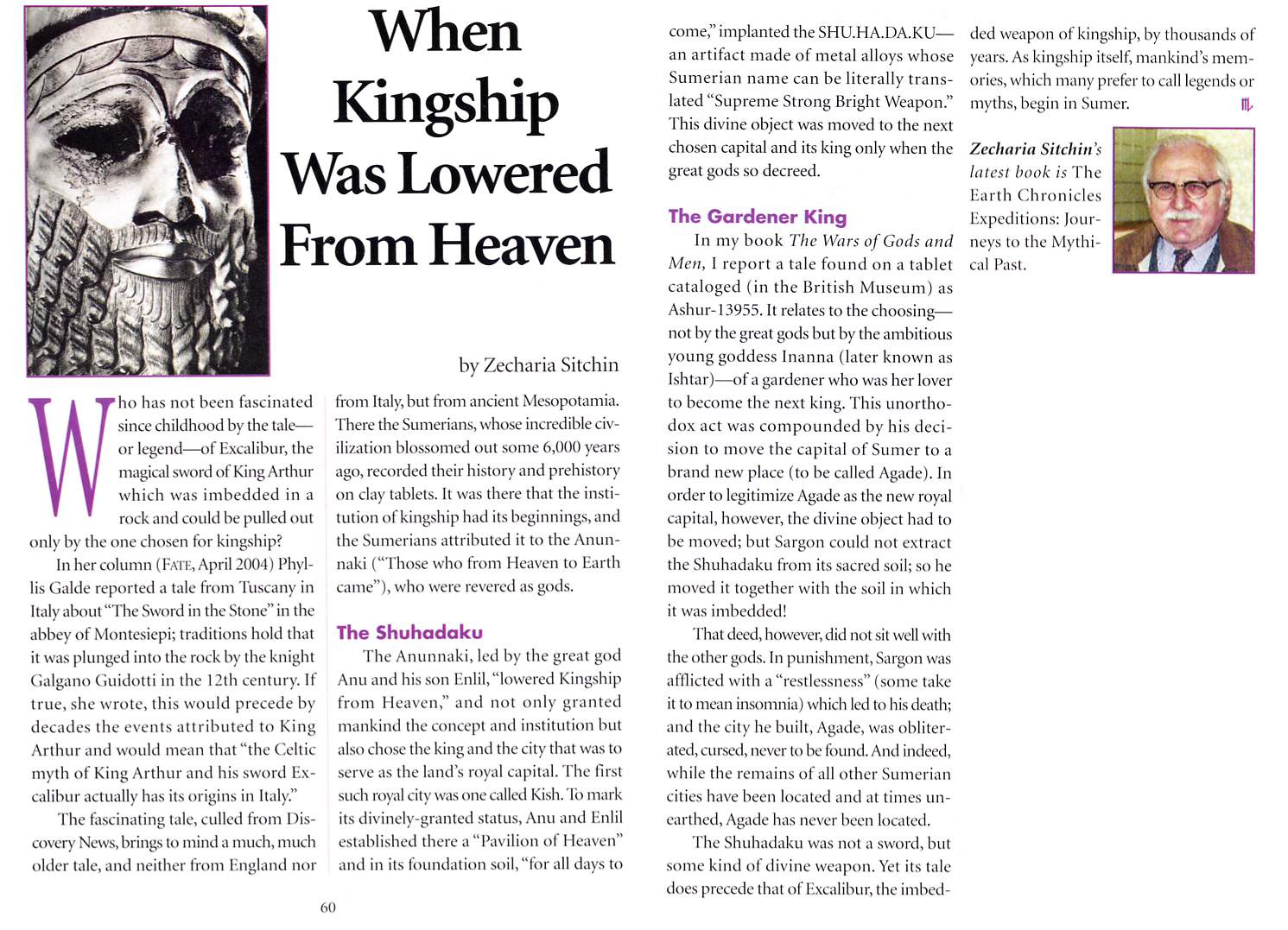
MYSTERIES an illustrated monthly magazine published in Basel, Switzerland (Editor in Chief: Luc Burgin), published a two page report in its issue of May/June 2004 titled "Wie kommt ein Elefant nach Sudamerika?". The article is based on Zecharia's reports, on this website and in his new book The Earth Chronicles Expeditions, about the Olmec exhibit in the museum of Jalapa, Mexico, where among the toys there was once a clay elephant -- an item that vanished from the exhibit the next time Zecharia, and a group of fans, visited the Museum. (The embarrassment: There are no elephants in the Americas -- so how come the Olmecs had made an elephant toy for their children?).
Zecharia’s assertion that the Anunnaki resorted to nuclear weapons in 2024 B.C. to obliterate a spaceport in the Sinai Peninsula – an event recalled in the Bible as the upheaval of Sodom and Gomorrah – was the subject of an article in the German monthly Magazin 2000 (issue # 177). Illustrated in the article was Zecharia’s attribution of the concurrent demise of the Sumerian civilization to the nuclear cloud (The “Evil Wind” of the Erra Epos) as it spread eastward toward Mesopotamia (see The Case of the Evil Wind previously posted on this website):
|
FATE Magazine, in its November 2002 issue, published an article by Zecharia Sitchin titled Creation, Evolution, Intelligent Design. The article was highlighted on the issue's cover and in a flyer to newspaper editors:
MAS ALLA, a mass circulation monthly in Spain, in its October 2002 issue, published a three-page interview with Zecharia, highlighting his statement "We are not alone in our own solar system." The interview was published on the occasion of the republication of Zecharia's books in Spanish by Obelisco Publishers of Barcelona, Spain:
|
